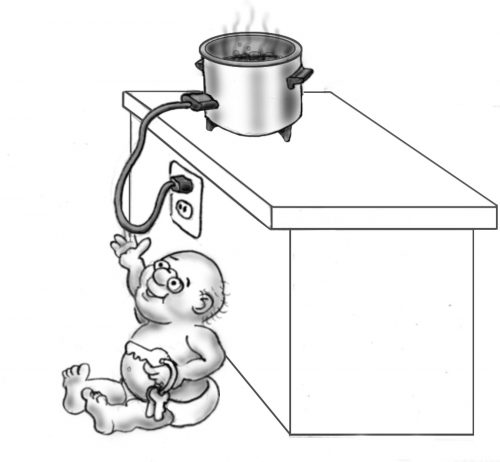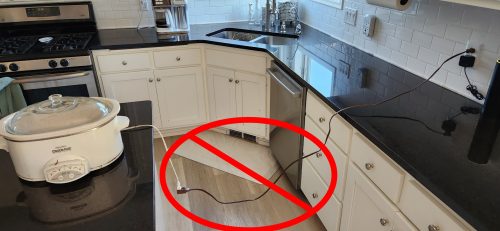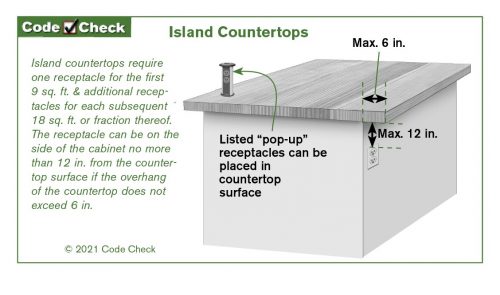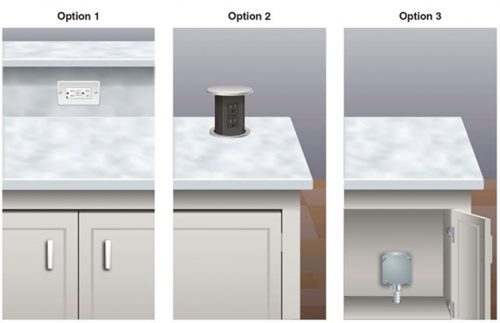As of July 1st, Minnesota adopted the 2023 National Electric Code (NEC), which brought many changes. I had retired Chief Electrical Inspector John Williamson join my podcast to discuss many of the more notable changes that home inspectors will want to be aware of, and you can find that podcast episode here: 2023 NEC updates podcast.
As far as I’m concerned, the most notable and surprising change is that countertops and peninsulas no longer need to have outlets, er, receptacles, installed.
Outlets vs. Receptacles: A receptacle is that thing you plug a cord into. Most people them outlets. But the electrical code defines an outlet as “A point on the wiring systen at which current is taken to supply utilization equipment.” This might be a light, a smoke alarm, or a receptacle. So a receptacle is always an outlet, but an outlet is not always a receptacle.
In the past, you were always supposed to have one or more outlets installed at your island or peninsula so you wouldn’t have to use extension cords to bring power to the island.
You don’t want an extension cord running across your kitchen so you can have a crock pot sitting on your island, right? The illustration below shows the old code requirements from 2020.
The problem with this, however, is that outlets are usually installed on the side of the island in reach of little kids. Kids grab the cord and pull, and injuries ensue.

To eliminate this potential hazard, section 210.52(c)(2) of the NEC no longer requires outlets at islands and peninsulas. While the new code no longer requires outlets here, this doesn’t mean you can’t do it. It just means that if you install a receptacle outlet at the island to serve the countertop or work surface, you must follow some new rules. You have three choices:
- Install an outlet above the countertop or working surface, but no more 20″ above it.
- Install a listed “pop-up” receptacle, like the one shown in the illustration above.
- Don’t install any outlets, but provide a means for a future outlet. This might mean running some cable and terminating it in a junction box, or running conduit so someone can fish wire in the future.
The illustration below, which comes from nfpa.org, depicts these three options nicely.
So, as a home inspector, what am I supposed to say about every existing house that has outlets installed on the side of the island? Nothing. To be extremely technical, the electrical code doesn’t actually prohibit the installation of outlets on the sides of islands and peninsulas. It’s very confusing, but you can see a long, detailed discussion about this here: https://youtu.be/CFwoCklNIow
Not only that, but we could include a million child safety warnings in our home inspection reports. We have to draw the line somewhere. Commenting on outlets installed on the sides of islands would take it too far.



